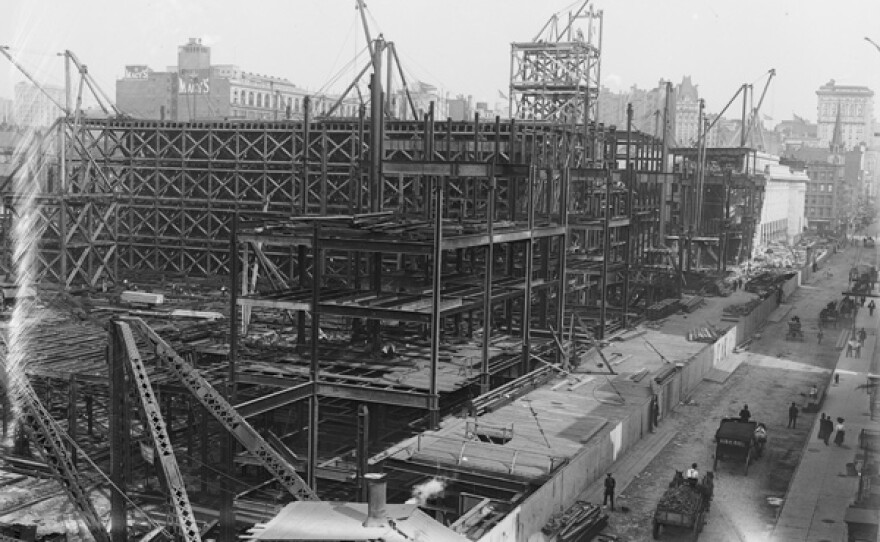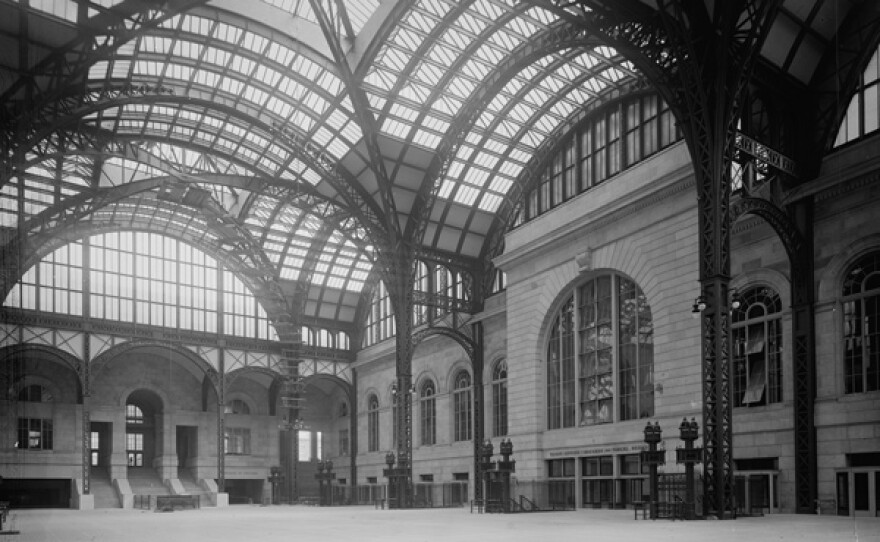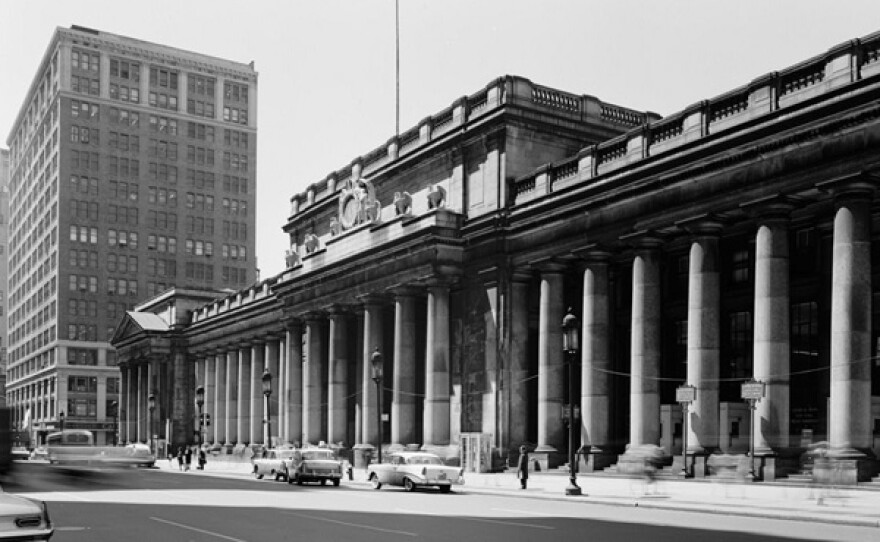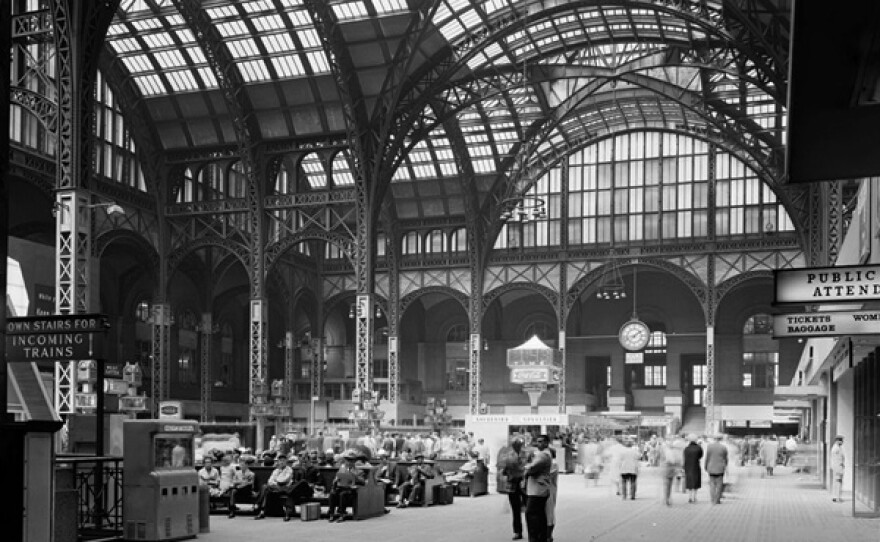It was a day New Yorkers had been anticipating for nearly a decade. Pennsylvania Station, a monumental train terminal in the heart of Manhattan, finally opened to the public on November 27, 1910. Covering nearly eight acres, the building was the fourth largest in the world. The main waiting room, which extended the length of two city blocks and rose 150 feet, was comparable to the nave at St. Peter’s in Rome in both size and splendor. The unveiling of the station represented the culmination of an unprecedented engineering project, the biggest civil engineering project of its time — the building of sixteen miles of underground tunnels, seven miles of which were under the Hudson and East Rivers.
Engineering Map of America
Explore America's greatest engineering feats through our interactive map. Dozens of museums, institutions and PBS stations have partnered with American Experience to bring you archival images, documents and videos related to America's engineering history. If you are interested in contributing materials on behalf of an organization, email to become a partner.




Perched above the awestruck crowd was a statue of Alexander Cassatt, president of the Pennsylvania Railroad, who had died bringing the station to life. He had defied legions of skeptics and gambled millions of dollars to link the nation’s biggest railroad to America’s greatest city. It was a rare example of a private investment that would also be a great gift to the public. Yet what no one could know that day was that Penn Station, built for the ages, would last only a few decades.
"The Rise and Fall Of Penn Station," written, produced and directed by Randall MacLowry, premieres on AMERICAN EXPERIENCE on Tuesday, February 18, 2014 on PBS.
By 1900, the Pennsylvania Railroad was the largest corporation in the world. With over 100,000 employees, its operating budget was second only to that of the federal government. But for all its glory, it had not been able to solve its greatest problem — linking its over 10,000 miles of track through America’s heartland to the island of Manhattan.
Inspired by a visit to the new Paris train station, Gare d’Orsay, and seeing firsthand its innovative use of electric traction and tunnels, Cassatt recruited Charles Jacobs, one of the world’s foremost tunnel engineers. His job would be an engineering project of unprecedented size and scope — the building of sixteen miles of tunnels under the Hudson and East Rivers, two of the busiest and geologically complex waterways in the world.
To create the station, which he envisioned as an unrivalled architectural tour de force, he hired the renowned architect Charles McKim, who had made his name designing grand civic spaces including the Boston Public Library and the campus of Columbia University.
The project began quietly. In the fall of 1901, three men went door to door, buying up real estate from West 31st to West 33rd Streets between Seventh and Ninth Avenues in the Tenderloin, a working-class neighborhood that was also one of Manhattan’s most notorious vice districts. Five hundred buildings were soon torn down, displacing hundreds of families to make way for Cassatt’s immense new terminal.
Just blocks from the massive excavation site, McKim was working on designs for a lofty space to celebrate what he called the “entrance to one of the great metropolitan cities of the world.” For inspiration, he studied the great buildings of ancient Rome, in particular the Baths of Caracalla. His grand design used 27,000 tons of steel, 500,000 cubic feet of granite, 83,000 square feet of skylights and 17 million bricks.
Creating the tunnels that would bring the trains to McKim’s beautiful station was the harder task. Two tunnels would be bored under the Hudson River from New Jersey to Manhattan, where they would open up into tracks fifty feet below street level.
Four tunnels would continue under the East River and emerge in Long Island; the final piece would be the Hell Gate Bridge, a span over the East River extending the rail lines north to New England. To span the Hudson, sandhogs began simultaneously digging tunnels on both the Manhattan and New Jersey sides of the river; three years later and a full year ahead of schedule, the two halves met. Under Charles Jacobs’ careful eye, their alignment was only off by a sixteenth of an inch — a feat for most engineers today.
The 1910 opening of Penn Station heralded a new era for travelers and soon 18 million people were passing through the transportation hub every year. Traffic exploded on the Long Island Rail Road, which brought an increasing number of commuters into Manhattan; within a decade, two-thirds of the passengers were from the suburbs. By 1945, more than 100 million passengers traveled through Penn Station each year, exceeding even Cassatt’s wildest dreams.
But by the 1960s, what was supposed to last forever was slated for destruction. In 1961, the financially strapped Pennsylvania Railroad, which had been losing customers to air and automobile travel, announced that it had sold the air rights above Penn Station. The company would tear down what had once been its crowning jewel to build Madison Square Garden, a high-rise office building and sports complex. There were protests, but to no avail.
On the rainy morning of October 28, 1963, the demolition of the grand edifice began and construction on the new station was completed in 1968. As architectural historian Vincent J. Scully, Jr. famously lamented, “one entered the city like a god; one scuttles in now like a rat.” In response to Penn Station’s destruction, New York City established the Landmarks Preservation Commission. Grand Central Terminal was designated a historic landmark in 1967, sparing it from the sad fate of Penn Station.





